
Calculating the amount of frequent flyer points and status credits you’ll earn when flying a partner airline can be complicated. But a new airline pricing trend is making it even more difficult.
Contents
Crediting flights to your airline’s own program
If you want to credit a Qantas flight to the Qantas Frequent Flyer program, you can fairly easily work out how many points and status credits you’ll earn. It’s based on the route and fare category, as outlined on the Qantas website. For example, Qantas Red e-Deal and Economy Sale fares are classified as “Discount Economy” fares and earn as such.
Similarly, it’s simple enough to calculate how many Velocity points you would earn on a Virgin Australia domestic flight. You’ll earn 5 points per $1 spent, plus any status bonuses. And you’ll earn status credits based on your ticket’s fare family and the distance flown. The table on the Velocity Frequent Flyer website clearly shows the status credit earn rates for Economy Lite, Economy Choice, Economy Flex and Business fares.

But if you want to earn Qantas or Velocity points and status credits flying with a partner airline, it’s not quite this simple…
When flying partner airlines, your fare class is important
Qantas Frequent Flyer publishes partner airline earning tables on its website. These show you the amount of Qantas points and status credits you could expect to earn when flying between different geographical zones on partner airlines, including Oneworld alliance members.
For example, if you flew on a British Airways-marketed flight from Sydney to Singapore, you would earn Qantas points and status credits based on the zone between “Sydney, Melbourne, Brisbane or Gold Coast” and Singapore.

Note that a different page on the Qantas website defines which cities are considered part of West Coast USA/Canada, East Coast USA/Canada and the other Qantas-defined regions listed on the earning tables.

How to check your fare class
So, how do you know whether your ticket is classified as Discount Economy, Economy, Flexible Economy, Premium Economy, Business or First?
For this piece of information, you need to check the Reservation Booking Designator (RBD) on your booking. This is commonly known as the fare class or fare basis code. It’s a single letter such as J, Y, Q or N.
You can often view your fare class when booking on the airline’s website. For example, when booking on the British Airways website, you can check the “selling class” (as British Airways refers to the RBD) in the pop-up that appears when you click on “Flight Details”.

However, not all airlines display this information. Frustratingly, Qantas and Virgin Australia are two airlines that do not show this information at the time of booking at all. This makes it near-impossible for customers to work out whether they’ll be able to earn points for Qantas or Virgin flights when crediting to another airline’s frequent flyer program.
See our guide to fare classes for more on this.
Cross-checking your fare class with the earning category
Once you’ve found your fare class, you can cross-check this with the Qantas Frequent Flyer Earn Category tables. These are different for every airline. For example, this is the table for British Airways flights credited to Qantas Frequent Flyer:

As you can see, Qantas classifies “M” class as a Discount Economy fare on British Airways. So, according to Qantas Frequent Flyer’s Partner Airline earning table, a one-way British Airways flight from Sydney to Singapore booked in M fare class (Discount Economy) would earn 1,000 Qantas points and 15 status credits.
However, note that British Airways uses fare classes W, E and T for World Traveller Plus (Premium Economy). Yet, Qantas awards points and status credits for these fare classes at the “Flexible Economy” rate.

So, to determine how many points and status credits you’ll earn on partner airlines, you really do need to cross-check your fare class with the Qantas Frequent Flyer Earn Category tables. You can’t just assume that a Premium Economy ticket will earn at the “Premium Economy” rate.
In fact, many Malaysia Airlines Business Class and Business Suites (First) tickets only earn Qantas points and status credits at the “Flexible Economy” rate. And some partner airline fare classes are ineligible to earn any Qantas points or status credits.

As you can see, it can already be incredibly complicated to work out how many points and status credits you’ll receive on partner airlines. And that’s before a recent change to how some airlines sell tickets.
An example of how airlines traditionally sell airfares
Qantas, Virgin Australia and most other airlines offer different types of tickets at various price points. Each fare category has different conditions and flexibility attached. Traditionally, airlines link those fare categories directly to specific fare classes.
For example, these are the fare classes that Qantas uses for each type of fare category on domestic flights:

As another example, Singapore Airlines sells different fare types such as Economy Value, Economy Standard and Economy Flexi.

The Singapore Airlines website offers a choice of each of the different fare categories for sale. And each category is linked to a specific set of fare classes. For example, Economy Flexi fares book into fare classes Y, B or E.
Singapore Airlines is a partner of Virgin Australia. To work out how many Velocity status credits you would earn for the above flight, you could simply check the status credit earn table on the Velocity website:

To calculate the distance flown, you could use a tool such as Great Circle Mapper or the Mileage Calculator on the Velocity website.
As the Singapore Airlines website displays the fare class you’re booking, you could also cross-check this with the list of eligible fare classes below the table on Velocity’s website. For example, when selecting an Economy Flexi fare, you can see that it books into “E” class – which Velocity recognises as an Economy Flexi fare class:

Or, if you select an Economy Standard fare, the Singapore Airlines website clearly shows that this books into “W” class. The Velocity status credits table lists this as earning at the Economy Standard rate, as expected.

Airlines are now selling different fare brands under the same fare class
Unfortunately, some airlines have started selling different fare families under the same base fare class. They still offer different types of branded fares with different inclusions, and at different price points. But the fare brands are not linked to specific fare classes.
Air New Zealand
Air New Zealand was one of the first carriers to do this, when it launched “Seats to Suit” fares.
On domestic and short-haul international flights, Air New Zealand offers a base “Seat” fare with minimal inclusions:

Customers can choose to upgrade to a higher fare brand for a surcharge. For example, regardless of the “Seat” fare price, it’s an extra $20-25 on the Hobart-Auckland route for a Seat+Bag fare. The Works costs an extra $40-50 and a Works Deluxe ticket costs $140-165 more.
If you choose to earn Air New Zealand Airpoints for this flight, Air New Zealand will reward you with more Airpoints Dollars and Status Points if you choose a more expensive fare family. But regardless of which fare brand you choose on the Air New Zealand website, it will book as a “P” class fare because that’s the lowest fare class with availability.

This has implications if you want to credit the flight to a Star Alliance partner airline, such as Singapore Airlines KrisFlyer.
According to the KrisFlyer mileage accrual chart, Air New Zealand “P” class fares are not eligible to earn KrisFlyer miles. But in the example above, this is the only fare class that the Air New Zealand website is offering for sale!

If you wanted to choose a more expensive fare class that earns KrisFlyer miles, you could call Air New Zealand or book through a travel agent. But how many people would even know that this is a thing – let alone go to that amount of effort?
Ironically, if you booked a Seat ticket from Hobart to Auckland two days earlier than in the example shown above, this would book into “W” class. Therefore, you would earn KrisFlyer miles – even though that airfare is cheaper than a Works Deluxe ticket on the flight two days later.

Malaysia Airlines
Air New Zealand is not alone in offering different fare brands that are all linked to the same fare class. For example, Malaysia Airlines has also started using branded fares which it sells as an upgrade over the base price for each fare class. This makes it even more complicated for Qantas Frequent Flyer members to work out how many Qantas points and status credits they can earn!
Here’s an example:

If you choose the cheapest Economy option – the Economy Lite fare – this will book into “Q” class.

If you choose the more expensive Economy Flex fare, you’ll receive a bunch of extra inclusions when you fly. But if you credit this flight to a partner airline, such as Qantas, you’ll still earn points & status credits at exactly the same rate because it’s still a Q class fare.

This change by Malaysia Airlines has caused a fair amount of confusion among AFF members.
Lufthansa Group
Lufthansa Group airlines including Lufthansa, SWISS, Austrian and Brussels Airlines also use this selling strategy. For example, have a look at the following flight from Munich to Tbilisi on the Lufthansa website:

Regardless of which fare you choose, the booking class will be the same – as shown in the Fare Comparison pop-up.

Other airlines
Other airlines that do this include:
- Air Canada
- Avianca
- Cathay Pacific
- Finnair (see discussion on the AFF forum)
Avianca also happens to use letters such as S, M and L as the names of its fare brands (these refer to Small, Medium and Large) – which only adds to the confusion. For example, I recently booked an Avianca flight with an RBD of “S” but the fare was branded as “L”.
Summary
There are benefits to airlines selling branded fares as an upgrade on top of the base price, and simply using RBDs to control available seat inventory. For airlines, it could improve ancillary revenue. And for customers, this can make flexible airfares more affordable.
When crediting flights to the airline’s own frequent flyer program, this wouldn’t make much of a difference. But if you often fly on partner airlines, and you want to maximise your frequent flyer earnings, this is something to be aware of.


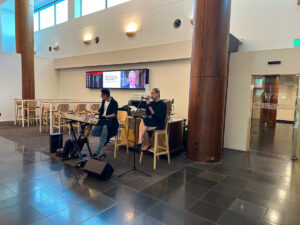
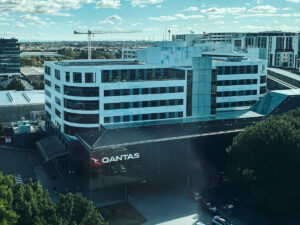


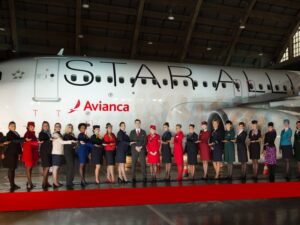




















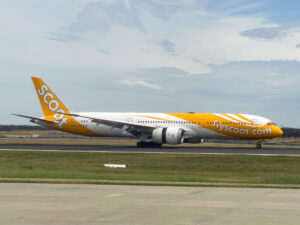





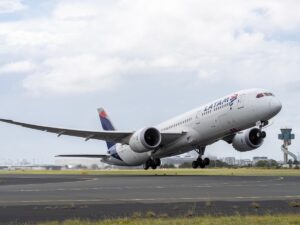







































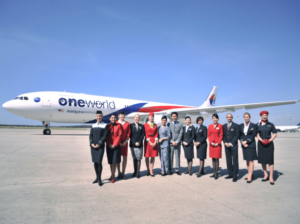





Community Comments
Loading new replies...
Join the full discussion at the Australian Frequent Flyer →